The St. Lucy Show (original) (raw)
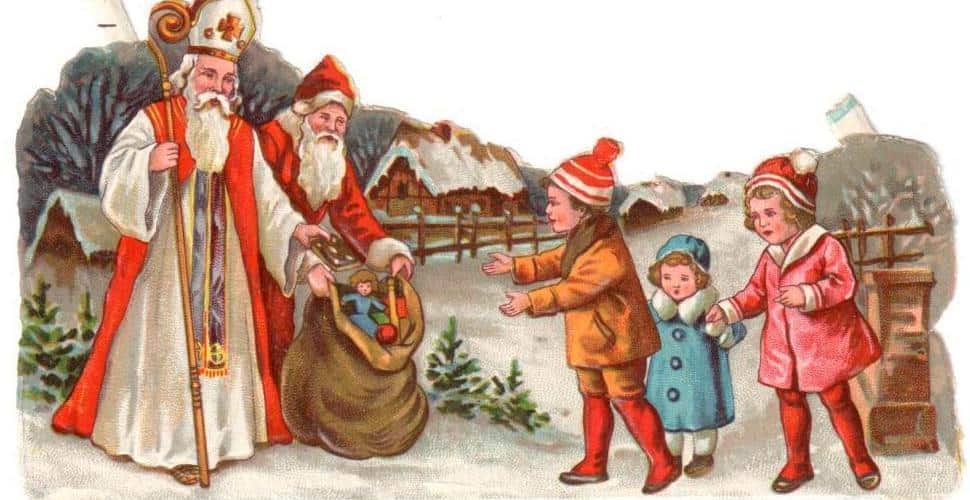
We watched a Morbid Anatomy lecture by Eric Huang from Saint Podcast about St. Nicholas, and how he developed into the modern Santa Claus, something I’ve written about before. I knew that it isn’t agreed upon that Nicholas was even a real person, and even less likely that he smacked a guy at the Council of Nicaea, but apparently he might be a conflation of two different guys, Nicholas of Myra and Nicholas of Patara. The explanation for combining the two saints is that he was born in Patara before coming to Myra. Another source for Santa that I heard about recently, both in this lecture and on another podcast, is The Children’s Friend, a poem by the Presbyterian minister Arthur J. Stansbury, published in 1821, two years before the first printing of A Visit from St. Nicholas. It’s the first known source to give Santa reindeer, and it uses the name “Santeclaus.”He’s said to leave toys for good kids, but switches for the bad ones. The publisher was a friend and neighbor of Clement Moore, which could explain where he got the idea, if indeed he wrote the more famous poem at all.

There was also some interesting information on St. Lucy, whose feast day was last Wednesday. In some areas, she’s the main gift giver instead of Santa. I guess there’s some precedent for someone with that name to be the Christmas Queen.
Lucy of Syracuse is said to have died in 304, as part of Emperor Diocletian’s persecution of Christians. She remained chaste and gave her family’s money away to the poor, as was common for female saints of the era. I’ve seen it proposed by more cynical researchers that a lot of saints’ biographers tended to cut and paste when there wasn’t a lot of information available. When Paschasius, the Governor of Syracuse in Sicily, tried to have Lucy taken away to a brothel as punishment for refusing to sacrifice to the Emperor, the guards were unable to move her or to set her on fire, but she finally died from a sword or knife in her throat.
Maybe that’s why Father Christmas gave Lucy Pevensie a dagger.
In the Middle Ages, she became known for having her eyes gouged out, either by the Governor or by herself in order to drive off a suitor, which doesn’t appear in earlier accounts. Her eyes later grew back after she died, which is why she’s often portrayed with eyes in her face as well as on a dish, like she’s serving them up as a treat.
Aside from the eyes, she’s often shown with candles in her hair, which sounds like a recipe for disaster.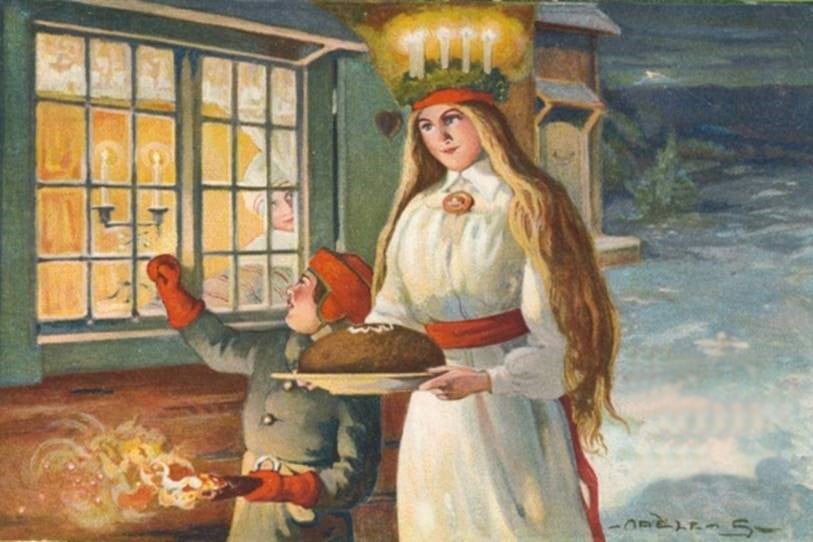
A lot of her associations might well have come from her name meaning “light.” Her day is traditionally known as the darkest night of the year, a holdover from the Julian calendar, and she’s the one who brings light in the darkness. This is a common aspect of winter holidays, probably ultimately coming from the return of the Sun at the winter solstice, albeit often in a quite indirect way.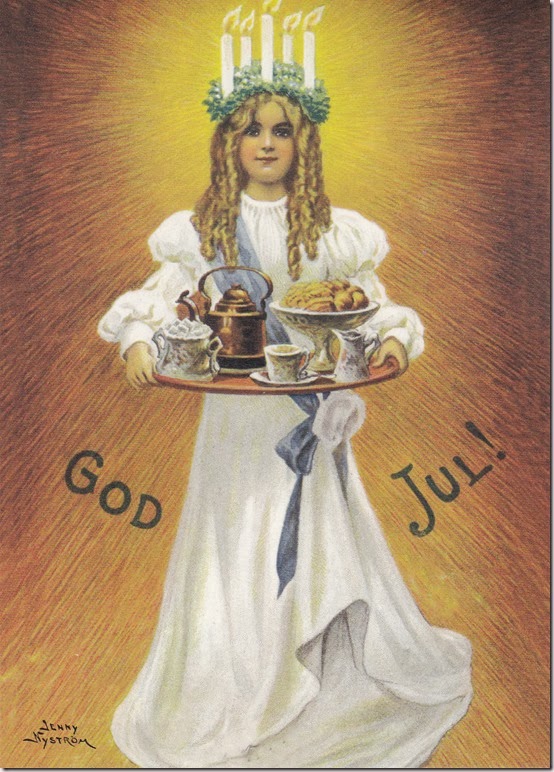
In Italy, Lucy is known to ride a donkey and deliver presents, and children will leave out coffee and carrots or hay.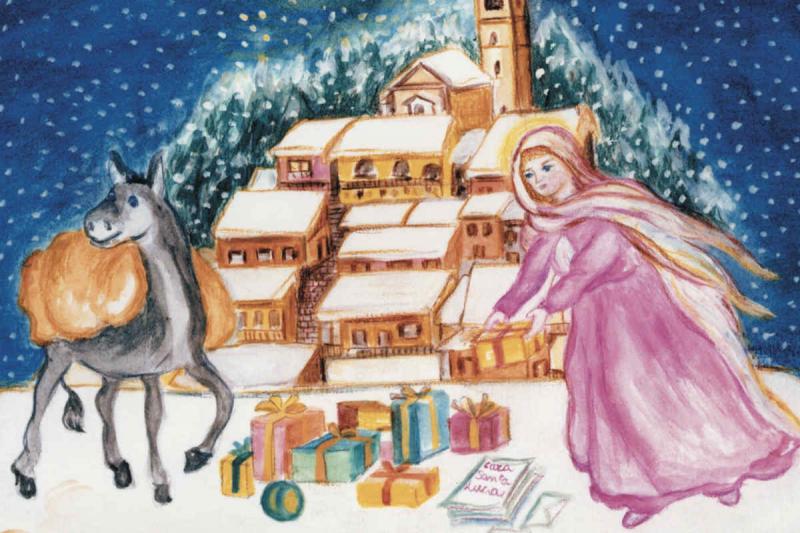
While the veneration of Lucy spread throughout Europe, it’s particularly popular in Scandinavia, where a traditional part of the celebration is to eat saffron buns with raisins, known as Lussekatter, or Lucy cats.
Why cats, I couldn’t say. At least they’re not eyes. But it has been suggested that Lucy has been associated with Freyja, who rode in a chariot drawn by cats.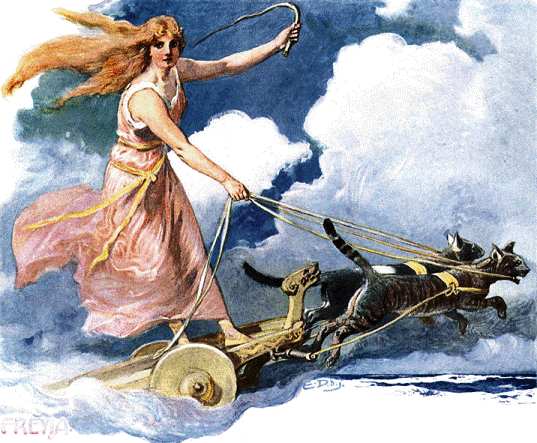
I’m not sure that the historical Lucy or Nicholas would have been cool with how closely they became entangled with pagan gods.
In earlier accounts, Lucy (spelled as Lussi) was regarded as more of a Perchta-style witch-like figure who made sure everyone had finished their threshing and spinning, riding on a flying broom and bringing along a bunch of trolls to enforce this.
The Befana also rode a broom and went down chimneys, but most of what I’ve seen about her indicates that she’s less eager to punish people. Nowadays, there are processions led by the Lucy Bride. The monstrous henchmen are still sometimes acknowledged in the parade participants, as are the Nisser. There are also Star Boys, dressed in white with hats decorated in stars, and carrying stars on sticks.
They came to be associated with the star of Bethlehem and King Herod’s stable boy, although that was probably a later development. They were originally part of Epiphany rather than St. Lucy’s Day, but these things tend to run together.
This entry was posted in Animals, Art, Authors, C.S. Lewis, Catholicism, Christianity, Christmas, Chronicles of Narnia, Food, History, Holidays, Monsters, Mythology, Names, Norse, Poetry, Religion, Roman Empire and tagged a visit from st nicholas, arthur j. stansbury, befana, cats, clement moore, council of nicaea, donkeys, emperor diocletian, epiphany, eric huang, father christmas, freyja, julian calendar, king herod the great, lucy pevensie, lussekatter, lussi, morbid anatomy, nisser, paschasius, perchta, podcasts, reindeer, saint podcast, santa claus, st. lucy of syracuse, st. lucy's day, st. nicholas, star boys, the children's friend, the lion the witch and the wardrobe, trolls, winter solstice, witches. Bookmark the permalink.